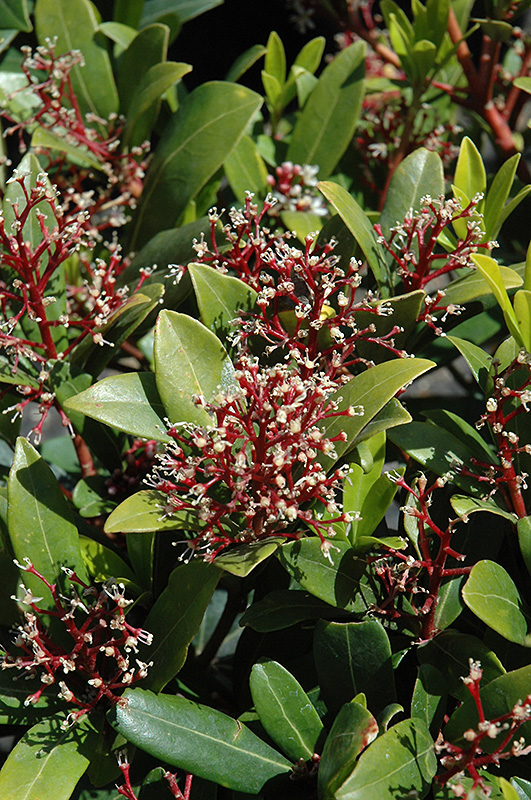Male Japanese Skimmia
Skimmia japonica 'Male'
Height: 5 feet
Spread: 6 feet
Sunlight:
![]()
Hardiness Zone: 6b
Description:
A handsome evergreen shrub with glossy green narrow leaves and panicles of sweetly fragrant white-pink flowers in spring; acts as a pollenizer for the female forms; excellent for borders
Ornamental Features
Male Japanese Skimmia features showy clusters of fragrant white flowers with pink overtones at the ends of the branches in mid spring. It has attractive dark green evergreen foliage. The glossy narrow leaves are highly ornamental and remain dark green throughout the winter.
Landscape Attributes
Male Japanese Skimmia is a multi-stemmed evergreen shrub with a mounded form. Its average texture blends into the landscape, but can be balanced by one or two finer or coarser trees or shrubs for an effective composition.
This shrub will require occasional maintenance and upkeep, and should only be pruned after flowering to avoid removing any of the current season's flowers. It has no significant negative characteristics.
Male Japanese Skimmia is recommended for the following landscape applications;
- Accent
- Mass Planting
- General Garden Use
Planting & Growing
Male Japanese Skimmia will grow to be about 5 feet tall at maturity, with a spread of 6 feet. It has a low canopy, and is suitable for planting under power lines. It grows at a slow rate, and under ideal conditions can be expected to live for approximately 30 years.
This shrub should be grown in a location with partial shade or which is shaded from the hot afternoon sun. It prefers to grow in average to moist conditions, and shouldn't be allowed to dry out. It is not particular as to soil pH, but grows best in rich soils. It is somewhat tolerant of urban pollution. This is a selected variety of a species not originally from North America.

